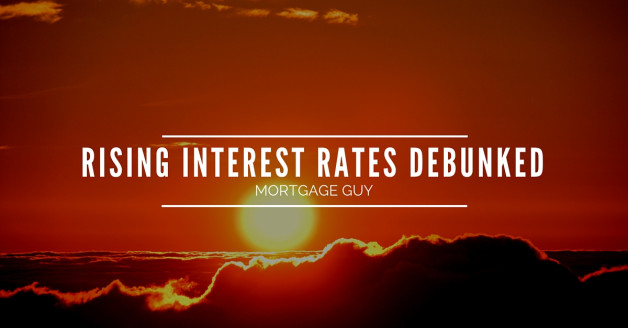Did you know that if you take out a mortgage, your lender could unexpectedly raise the interest rate? One month you’re happily paying off 4.10% on a $600,000 home loan, and the next month your bank informs you they’re increasing the rate to 4.30%. Merry Christmas everyone! Sounds like a modest figure, right? But the difference is $70 extra a month. That’s your Foxtel subscription, or half of your coffee budget.
Ouch. No more lattes for you.
Unless you have a fixed rate mortgage, it’s up to the banks whether they decide to raise their home loan interest rates or not. So why do banks raise their interest rates? Can they do that? And what does it mean for a first homebuyer?
How are home loan interest rates set in Australia?
All lenders set their own variable rates with guidance from the Reserve Bank. The big four banks – that’s the Commonwealth Bank of Australia (CBA), National Australian Bank (NAB), Westpac and ANZ – all set their own home loan interest rates. And in fact, just last October, all of them decided to hike up their home loan interest rates. When asked why the big jump out of cycle with the Reserve Bank’s rates – which you can learn about here – they all echoed a similar line: to comply with new policy conditions, and in response to market conditions.
| NAB Standard Variable | Current Rate | New Rate | Difference |
|---|---|---|---|
| Loan Amount | 5.43% | 5.60% | 0.17% |
| $300,000 | $1829.74 | $1860.22 | $30.48 |
| $400,000 | $2,439.66 | $2480.29 | $40.64 |
| $500,000 | $3049.57 | $3100.37 | $50.80 |
| $600,000 | $3659.49 | $3720.44 | $60.96 |
| $700,000 | $4269.4 | $4340.52 | $71.12 |
| $800,000 | $4879.31 | $4960.59 | $81.28 |
| $900,000 | $5489.23 | $5580.66 | $91.44 |
| $1,000,000 | $6099.14 | $6200.74 | $101.60 |
And this is true – the Australian Prudential Regulatory Authority (APRA), who are the watchdog of the mortgage industry, are demanding tougher scrutiny of borrowers and stability of lending institutions which is ultimately a good thing. APRA requires the big banks to increase their risk weighting – that’s extra capital they need as a buffer in case of a financial crisis.
But there’s also the glaringly obvious fact that higher interest rates = more profits for the banks.
The CBA could make an extra $325 million in annual profits as a result of their rate hikes, according to Fairfax analyst estimates.
The big catch 22
So by now, you’re probably thinking, “Andrew, if the banks are raising interest rates, how is this profitable for them to write loans – won’t they lose customers?” And that’s a good question, which shows you’ve been paying attention. The banks raise their interest rates to preserve their shareholder’s returns, so it’s in their best interests to keep them happy. People don’t generally invest in a business that doesn’t look profitable, so increase your profits, and increase your attractiveness to investors.
So who foots the bill here? The bank’s existing customers, who end up paying a bit more than they expected.
And here’s the thing: when the big four banks start to increase their interest rates, it’s not uncommon for other lenders to follow suit. In this this particular case, the changes only applied to the major banks so the non-majors didn’t need to follow. But they can and most did.
The good news
Despite all the negativity in the media, there remains two silver linings that I’d like to focus on.
-
Interest rates are still low
Although interest rates are going up, they’re still at 50-year lows. The Reserve Bank of Australia (RBA) – who sets the official cash rate – has been keeping the cash rate at an historical low of 2 per cent. As the big guys in charge of providing the banks with financial services and advice, the RBA’s cash rate can be used as an indicator for the interest rates set by the banks. The banks don’t have to follow suit and raise or decrease their rates inline with the RBA, and as we’ve seen lately, they’ve been acting of their own accord. But an interest rate of between 4-5% isn’t half bad, and it’s far better than what we were seeing back in 2008.
-
Regulation is good for the little guys
These new APRA regulations make it fairer for the non-major banks, who often can’t compete with the big guys, who can afford to write mortgages with lower interest rates. And although there are a few non-major lenders out there who are increasing their home loan interest rates, there are a few choice lenders who aren’t. That’s a win for you!
Staying in the loop when it comes to interest rate changes is imperative for any first homebuyer. Ensure that you’re well aware of interest rate charges and the terms of your variable rate home loan, and you’ll have a far better understanding of the true cost of your home over the lifespan of your mortgage.
